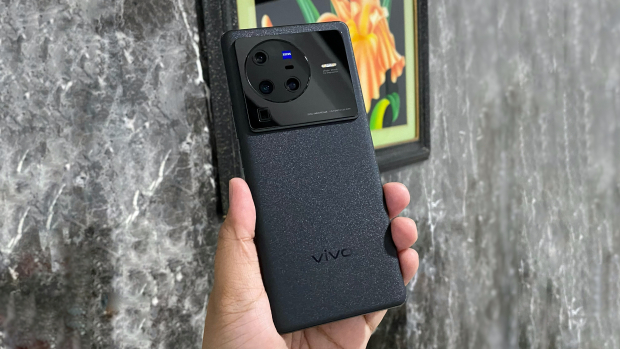The new member of Vivo’s premium X-series represented the brand’s close collaboration with the German imaging experts at Zeiss, a company previously seen emblazoned in most midrange and flagship Nokia phones of HMD Global.


Back in 2020, Zeiss also announced a partnership with Sony to provide its optics technology with anti-reflective coating. With the new Vivo partnership, Zeiss is more hands-on with the technology it provided, marketing the cameras of the flagship X80 series as imaging systems that it ‘co-engineered’.
With its new breed of X-series smartphones, Vivo is not eyeing to dominate the mobile e-sports market. Instead, the X80 models are actively pushing the boundaries on what the company can deliver in terms of a premium smartphone experience and enhanced photographic capabilities that stand out from the competition.
By combining user-oriented innovation and premium mobile imaging technology, Vivo is able to provide users with snappy processing without the risk of instability, consistent performance without stuttering and hiccups, and a reliable camera setup that is as versatile as it is formidable.

Design and display
At first glance the Vivo X80 Pro may seem like it’s built like a tank, but after a while users will realize that they’re holding what is essentially a glass sandwich. Between the front glass panel and the glass back is an aluminum frame that is consumed by a 3D curved screen.
The fragility is further pronounced by the glaringly large glass camera housing dubbed ‘Cloud Window’ that produces a sizeable camera bump. Even Vivo’s own faux leather hard plastic case offers little to no protection to the device, strongly hinting at the fact that the Vivo X80 Pro is a smartphone that is meant to be looked at and to be admired.
In a sea of smart rectangles, the Vivo X80 Pro stands out not as an expensive main driver for productivity and photography, but as a work of art. Using the Vivo X80 Pro is a statement that not all smartphones are meant to be buried in thick chunks of vulcanized rubber, and in this case, actually acts as the anchor of its user’s aesthetic expression.
On front is a 6.78-inch screen made of Samsung’s 5th generation luminous Amoled (E5) material which works in three ways: allows a peak brightness level of 1500 nits, provides a contrast ratio of 8000000:1, and consumes 25% less power.
In real-world scenarios, there hasn’t been an instance where the Vivo X80 Pro encountered issues with visibility, and thanks to the upgraded LTPO, battery life does not degrade as much as it should on this device.
Fluid visuals are basically guaranteed from the Vivo X80 Pro’s 120Hz screen refresh rate and 300Hz touch sampling rate, video content on social media and streaming platforms can be viewed in a much higher quality since the Pro model supports 2K resolution plus a high 517 pixels-per-inch density, enhanced further by the smartphone’s dedicated HDR10+ functionality called Eagle Eye mode.
Performance and specs
Under the Vivo X80 Pro’s hood, the Snapdragon 8 generation 1 mobile platform runs the show. As the chipmaker’s most advanced 5G platform to date, the chipset enhances the device’s imaging capabilities with the 18-bit ISP Snapdragon Sight on top of Vivo’s self-developed V1+.
Vivo also balances the sheer processing processor of its SoC with the liquid cooling vapor chamber, immerses gamers with Hi-Fi ready dual stereo speakers, and keeps up with all-day usage via a 4700mAh battery life charging at 80W capacity.



Camera
The Zeiss co-engineered camera system is the Vivo X80 Pro’s headlining feature and it performs beautifully in several areas: from the plethora of shooting modes and functionality, the versatility and consistency of the imaging capabilities no matter the lighting condition, and the unique value proposition of the setup in its entirety.
By using the camera of the Vivo X80 Pro, photography and videography requirements that didn’t previously exist for both novice and experienced users have come to the foreground. As an example, one common interest of users is how to capture clear and smooth videos, but the Vivo X80 Pro takes this a step further by delivering a cinematic mode that is simply top-notch.



Meanwhile, the night mode blows the competition out of the water. In these images, we captured snaps of a neighborhood that is almost pitch black at 1AM in the morning. The Vivo X80 Pro’s cameras made it seem like it was 5 in the afternoon.



In the stock camera application, the available modes include High Resolution, Night, Portrait, Photo, Video, Pro, Panorama, Live Photo, Slow Motion, Time-Lapse, AR Stickers, Micro Movie, Supermoon, Ultra HD Document, Astro Mode, Pro Sports Mode, Long Exposure, Double Exposure, Dual-View Video, and AI Group Portrait.
Software and UI
The Vivo X80 Pro has a clean and responsive user interface, except for the extra bloat caused by a handful of pre-downloaded applications and the logos of recommended apps. As an extension of its Tier SSS display and Snapdragon’s high-caliber processor, using the device is a buttery smooth experience with virtually no downside.
The device supports NFC, has an Always On display and ambient light, can provide personalized custom animations for different operations, is Wi-Fi 6 ready, has an infrared blaster, a scanner for in-display fingerprint security, and a dedicated e-sports mode.
Conclusion
The Vivo X80 Pro is an elegant flagship that is well worth the expensive price tag. It packs a lot of punch in the imaging department and can be relied on to handle any demanding task with ease. Although it leans on the delicate side based on how it is designed, there is no denying that its aesthetic composition and conversely how it captures the world through its own lens, is the Vivo X80 Pro’s most attractive selling point.




